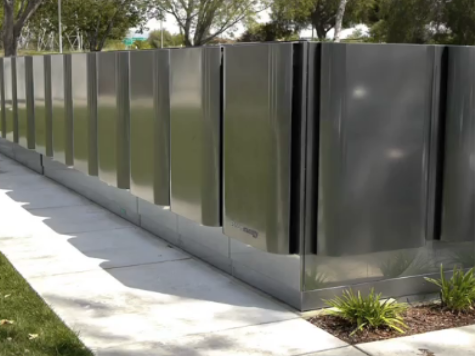A federal lawsuit has just been filed in Delaware regarding fuel cell maker Bloom Energy, alleging that the company benefited from cronyism and special treatment by the state government. In fact, an analysis of Bloom Energy’s own past admissions reveals that “cronyism” may be the least of the company’s problems: the “green” energy its generators produce may, in fact, be less efficient, more expensive, and dirtier than that produced by conventional alternatives.
Who is Bloom Energy? It is a private company, funded by Kleiner Perkins Caufield Byers, a leading venture capital firm. Kleiner Perkins has Al Gore on its team, and has Colin Powell as a strategic advisor and independent board member. Kleiner Perkins sets the pace for what happens on Sand Hill Road in Silicon Valley. (Editors’ note: Bloom Energy failed to return request for comment.)
Bloom Energy provides “green” energy generators that use solid oxide fuel cells. The fuel cell technology used by Bloom Energy has been around for more than fifty years. However, Bloom Energy claims it has improved on its performance, through proprietary breakthroughs in materials science.
Apparently not.
In November 2011, Bloom Energy applied for permits to build an energy center in a Delaware protected coastal zone area. The center would employ solid oxide fuel cells powered by natural gas and housed in casings that look like huge boxes–Bloom boxes or “energy servers.”
Buried deep in the permit application, in Table 1 on page 161 of a 163-page application, was the number 884. On that page, under penalty of perjury, Bloom officially told the world that its energy servers emit 884 pounds of carbon dioxide per megawatt hour.
The number 884 reveals that the Bloom boxes are only 45.2% efficient, compared to the full heating value of natural gas. That’s good, but it still means 54.8% of the natural gas energy is “wasted” or not turned into electricity.
It’s certainly not the “over 60% in efficiency” figure that a Bloom marketing director recently presented to a NASDAQ reporter. It’s not the high efficiency figure that another Bloom executive conveyed to CBS News’ Leslie Stahl when she introduced her 60 Minutes audience to the technology in February 2010. It is not the high efficiency level that Bloom told the IRS and California Franchise Tax Board about, when it sought large tax credits for customers that install Bloom Boxes.
Bloom’s permit application also claims Delaware’s air will be much cleaner as a result of its installation of Bloom boxes, with 235 of its ES-5700 Servers generating 47 megawatts of affordable electricity. However, those 235 Bloom boxes cost the same as one 350-MW combined cycle natural gas generator, which would be 53.3% efficient, using the same natural gas fuel.
That means the same taxpayer/ratepayer investment that Bloom wants for its new installation could provide Delaware eight times more clean electricity, if the same money were spent on a combined cycle gas generator.
Also buried on page 161 of the permit application is a Table 2 notation that says these 235 “clean” servers would emit 22.56 pounds of volatile organic compounds (VOCs) per day. But Delaware, like other states, regulates VOC emissions at far lower levels (Maryland, for instance, regulates boat repair shops that emit more than 15 pounds per day). Moreover, if the same amount of power had been generated by combined cycle gas turbines, only 0.249 pounds of VOCs would be emitted daily. That’s 90 times less pollution!
To top it off, because of the Bloom servers’ low efficiency and high capital cost, Delaware citizens will pay Bloom over $200 per megawatt hour of power delivered to their electricity transmission grid. But in January 2012, the U.S. Energy Information Agency said the projected “levelized” cost of electricity over the next 30 years from advanced gas-fired combined cycle power stations is $65.50 per MWH.
In other words, Bloom plans to charge Delaware citizens three times the $65.50 rate, for dirtier power.
How did Bloom Energy pull off this boondoggle? Well…
One Bloom director, John Doerr, had the sitting President of the United States over for dinner, and has former Vice President Gore as a business partner. Another director, General Powell was formerly Secretary of State and Chairman of the Joint Chiefs of Staff. The current Vice President hails from Delaware. They are all good friends of Delaware’s “green” Governor and Secretary of Natural Resources and Environmental Control (DNREC).
All of the above suggests that the right Delaware political connections may have helped get Bloom the electrical connections, subsidies and rates it wanted–even when the alternatives for power generation are more efficient, cleaner and far less expensive. Yes–the same DNREC approved Bloom’s permit on May 4, 2012!
But the simple number 884, tucked away in an obscure table at the end of a permit application loaded with techno-babble, may help end Bloom’s boondoggle.
The issuance of Bloom Energy’s permit is being appealed. When the facts come out, and the rose-colored glasses are taken off, Delaware’s courts, taxpayers, ratepayers and legislators may yet decide that an honest evaluation of the facts must trump crony capitalist political connections.
Lindsay Leveen is a chemical engineer who studied thermodynamics in graduate school at Iowa State. He blogs at www.GreenExplored.com and explains complex science issues in lay terms.

COMMENTS
Please let us know if you're having issues with commenting.